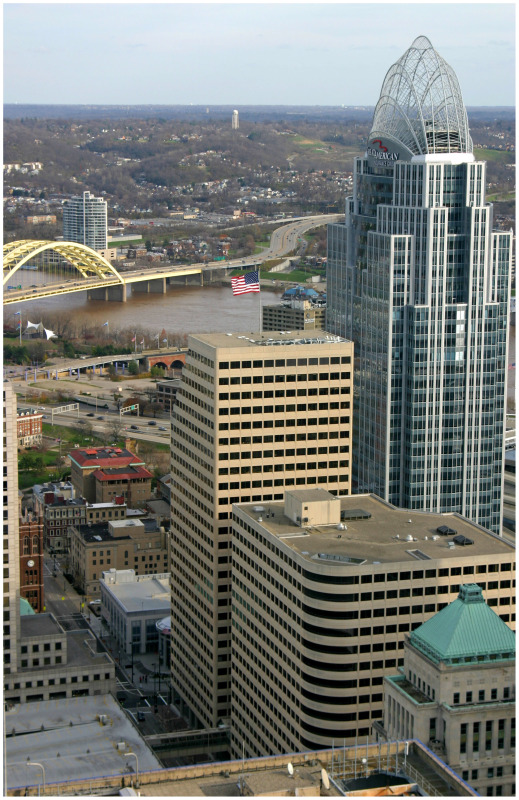While 1960 to 1990 is often thought of as a low point for the architecture, planning and engineering professions for a variety of reasons, it turns out it was also one of the more active time periods in terms of construction.
Cincinnati is well known for being an old-growth city that acquired its urban form either during the 1800s or early 20th century. But the central business district that defines the city’s skyline, and thus the region’s national and international image, was largely built during that time frame.
While researching contemporary boom periods in Cincinnati, UrbanCincy dove a little deeper into the data and broke down the construction trends for buildings over 100 feet (8-10 floors) in height. While much growth occurred during the 1800s, only three structures over 100 feet were constructed during that century – Roebling Suspension Bridge, City Hall and the Shillito Building.
There was an initial surge in construction of buildings with this minimum height from 1900 to 1929 which included the construction of 35 such structures. There was then a lull from 1930 to 1959 as global wars took their toll on domestic building projects. Cincinnati then went on a three-decade surge of high-rise construction that included 61 new towers at least 100 feet in height.
Since 1990, the trend has been fairly steady with an average of eight new towers being constructed each decade. While analyzing contemporary patterns, it appeared as if Cincinnati was on a trend to exceed that average set by the past 30 years.
The region is barely into the next decade, but two towers of more than 100 feet have already been completed including the city’s new tallest tower. There are also plans on the books to construct another six towers (TBD Hotel at The Banks, Office Tower at The Banks, dunnhumbyUSA Tower, Christ Hospital Research Tower, Children’s Hospital Research Tower, Holiday Inn Hotel & Suites) in the near future.
Additionally, there is a strong likelihood for more tower construction through other lingering development plans (SouthShore 2, Hotel at Horseshoe Casino, Ovation, One River Place).
Tower construction in this decade may indeed surpass recent averages, but the large share of new construction in Cincinnati is actually made up of low- to mid-rise structures. What do you think…has the trend towards skyscrapers begun to wear off in favor of more human-scale development?

